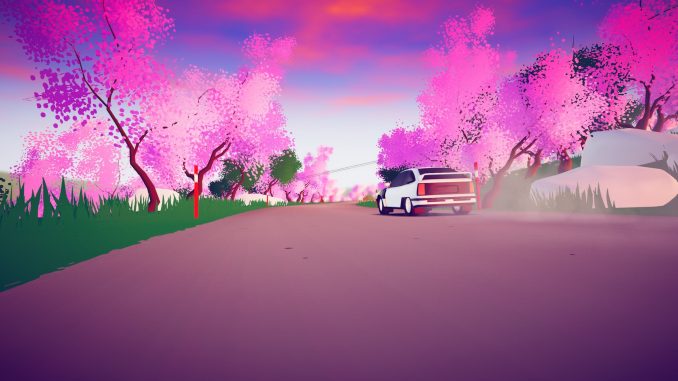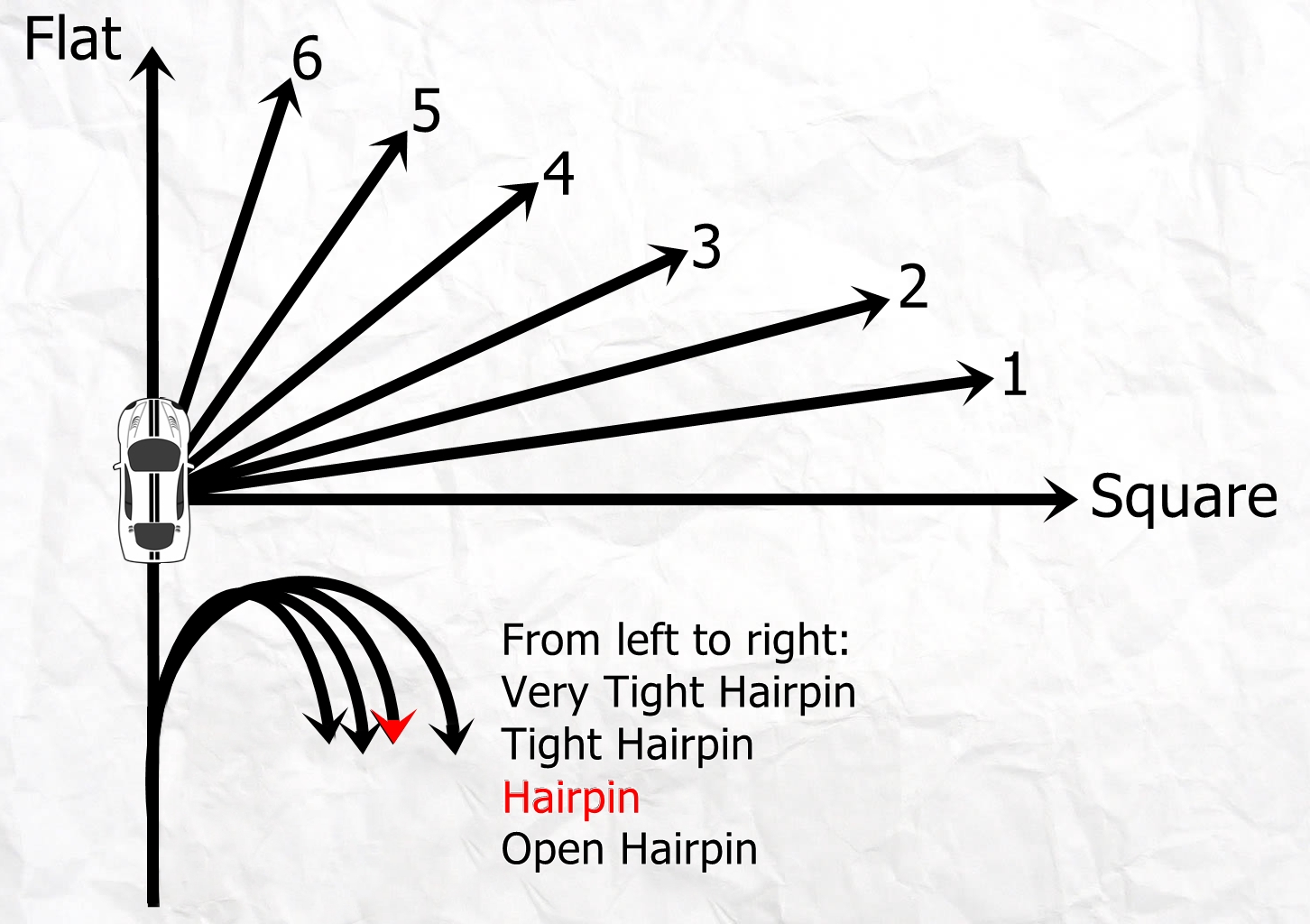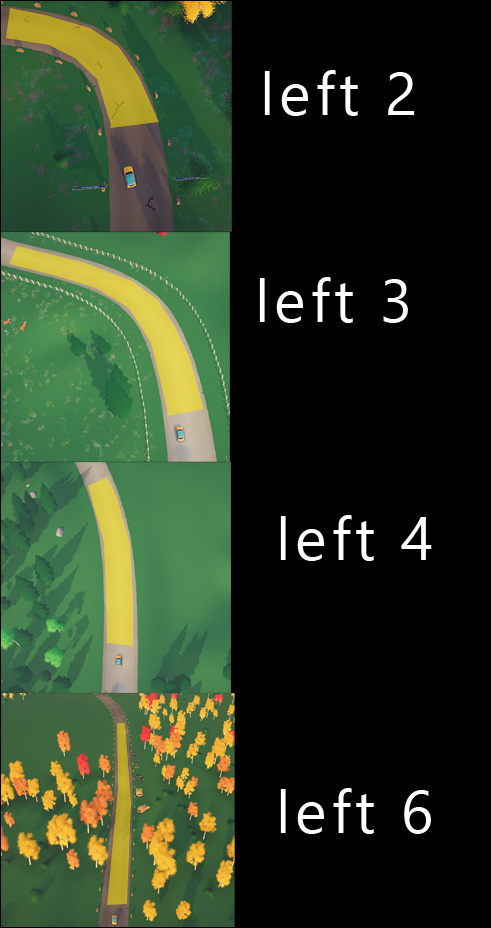
Introduction

Hey there, Driver!
It’s really, really easy to get frustrated at this game. It seems like even though you’re trying your hardest, the game does its best to really throw you off balance. Well don’t worry! I could say something generic like “practice makes perfect,” but there’s maybe a few things you aren’t thinking of when you are taking a turn at break-neck speeds, and these things might help you shave off time—and more importantly, keep control of your vehicle while doing so.
I think it’s important for me to preface all of this by saying I am not an expert at this game. I’m not a world record holder or self-proclaimed prophet. I am simply experienced. I should also note that I play this game with an Xbox controller.
Before we start the fundamentals, I think it’s also important not to worry about your setup or your hardware. If you play the game, for example, with the stability assist on high, you’ll get used to driving with it on high. Likewise, if you play with stability assist on low, you’ll get used to that too. There’s no shame in driving with assists on. Don’t feel pressured in to turning them up just because you are having a hard time playing. If you are constantly frustrated at the game because you can’t control your vehicle, you aren’t having a good time, are you? So crank those assists up!
Fundamental 1: Overdrive—No Bueno

Driving fasterisn’tdriving smarter.
Do you know the story of the tortoise and the hare? Slow and steady wins the race every time. You can’t win if you’re out in the trees.
One of the hardest things about the art of rally is controlling your vehicle. If you lose control, it is more than likely because you are overdriving it. This is true in almost every racing scenario, and it is more than likely the crux to all of your problems. If you over-drive, you end up hand-braking and over-steering because you missed your turn. If you over-drive, you also end up under-steering which means you are just continuing forward in to a field or a tree or a rock or whatever because you didn’t slow down enough to initiate a turn.
Overdrive = lack of control.
If you cannot control your vehicle, you are driving too fast. Slow it down.
The art of rally has a strange, almost alien-like top-down view which throws off your perspective in a lot of ways. One of the biggest perspective changes is that everything looks like it’s in slow motion. You feel like you are driving slower than you really are, which means you end up going faster to make up for it. What does that mean? You’re going to lose control. Don’t feel pressured in to driving faster! You would be surprised at how fast you are really going already.
You should also drive around a little bit in free-roam to figure out how to recover from the loss of control. It’s going to happen! The only thing that’s going to make spinning out worse is if your recovery is worse than spinning out. Some great things to keep in mind is that accelerating should only be done when you are driving in a straight line. If you lose control, accelerating will usually straighten you out and help stop fishtailing.
If you accelerate at a low gear, you will straighten out faster since you will bleed speed exponentially.
Don’t be afraid to drive in low gears. Second gear is like 35 MPH, which is really way too fast for a lot of curves in most situations. It sounds lame because it’s only second gear, but 90% of rallying is driving in first, second and third gear. Rarely is there a straight road to fly down at 100 MPH. Your average speed should be around 30 to 60 MPH in most courses, so keeping it in low gear will benefit you more often than you think!
Fundamental 2: Know The Curve; Be The Curve
It’s important to know what is ahead and how to beat it.
https://steamcommunity.com/sharedfiles/filedetails/?id=1663381032 If you aren’t fully aware of rally driving, you usually have someone such as a passenger to feed you information about upcoming hazards and bends in the road. They use a brevity code called pace notes. A lot of information from that guide can be utilized in this game, but the most important thing to understand is what kind of turn you will be facing and how to tackle it.
For this I’m going to shamelessly steal the image from the guide above.

A good thing about this numbering system is that often times the numbers can correlate to what kind of gear you could be in. For example, at a 6 it’s usually safe to imply that you can go full speed ahead at your highest gear and be relatively safe. Meanwhile a 3 or a 2 means you should be in about second gear to make it safely through the bend. Of course, this also means you need to slow it down to accommodate these turns too. If you’re at 70 MPH and gear down to second gear, you should brake until you’re about 30-35 MPH too since that’s about the maximum speed you would get when in second gear. Right? Make sense?

The numbers correlate what kind of turn each number is. For example, a 6 is almost a completely straight line and you are relatively safe driving full-throttle. A five is like a 6 except with a little bit more bend. On the opposite end of the spectrum, a 1 is almost a 90 degree turn, and a square IS a 90 degree turn. There are even scenarios where you have 45 degree turns, almost like hairpins.
Instead of looking at your car and worrying about being fast/slow, instead pay attention to the road ahead. If there’s a curve, you should be able to discern what number it is. Is it a 4? Do I need to slow down just a liiiittle bit to get across the bend safely? Or is it a 2 and do I need to punch the brakes hard and gear down so I can make it?
Once you get good at discerning what kind of curve meets what kind of gear requirement, you will begin mastering them in no time.
If you can’t tell if a curve is going to be a 2 or a 3, it’s probably a 2.
Lastly, another kind of curve is a dip, a hill or a crest. It’s just a vertical curve instead of a horizontal curve. You should be on the lookout for these just as much as curves. If you see a steep hill up ahead, it’s better to slow down and get across it safely instead of speed up and get that sick air time. It might be cool soaring through the air for a second, but you have absolutely no control of your car. If you DO get air-time, do not turn the wheels at all. Instead, let your car land safely while rolling forward before correcting your movements. If your car lands with its wheels turned, you will more than likely flip out of control or fishtail erratically.
At the end of the day you will lose way more time trying to correct yourself after you jump. Why not just take it slow and safe instead? 🙂
Fundamental 3: Negative Pressure

Don’t feel like you’re not doing good enough. You’re doing better than you think.
Rally is a sport for patient people. It’s hectic, erratic and in the beginning you are driving in to the unknown. In the beginning, the pressure is ON. You’re not only wrestling with your controls and your car, but you’re also tackling a timer and you’re in the mindset that you have to win each stage in first place. If you feel like you’re going too slow, or if you feel like you’re going to get lapsed, you end up going in to over-drive mode. What’s gonna happen when you go in to over-drive mode? Yup. You’re going to crash.
We all crash or spin out or get penalized. Sometimes you just have to nose-dive in to the trees. It might feel like it’s the end of your run, but you should complete the stage anyway because guess what? You might be way ahead. I have had stages where I spun out like three times and even reset four or five times, netting me a 20 second penalty, and still came out on top at the end of the stage.
You don’t know it, but if you aren’t wrecking around every turn you come across, you are probably blazing through the stage and are setting records. Even if you do spin out or whatever, it might only barely affect your lap time at all because you’ve been driving safely the entire time up until that point. Push through anyway. If you feel like you have to reset, do it! But don’t feel over-pressured that you have to have a perfect run. You can do that after you memorize the track. If it’s your first time through—or even your twentieth time—going slow is actually going super fast. It just doesn’t feel like it.
I guarantee if you just zen out and drive slow while chillin’, you’ll not only win first place every time but you’ll also get insanely good at the game too. Then you can become Drift King
Finale
To wrap things up, I’m going to re-iterate what was listed above:
• Speed isn’t everything—control is. Slow down every once and a while. Get a grip!
• Always look ahead. Know which speeds to take each bend. If you aren’t sure, take it slow.
• You’re way faster than you think you are. No pressure!
So, like I said, this all seems like common sense stuff, even to long-time rally players but it’s all stuff we could all have told to us again and again. Go figure, you don’t need tons of technical knowledge to actually be good at playing this game! I hope this helps anyone who’s either new, has been struggling, or is a rally veteran alike. If not—remember, take it slow!
I’ll see you on the leaderboards!
I hope you enjoy the Guide we share about art of rally – The Three Fundamentals; if you think we forget to add or we should add more information, please let us know via commenting below! See you soon!
- All art of rally Posts List


Leave a Reply